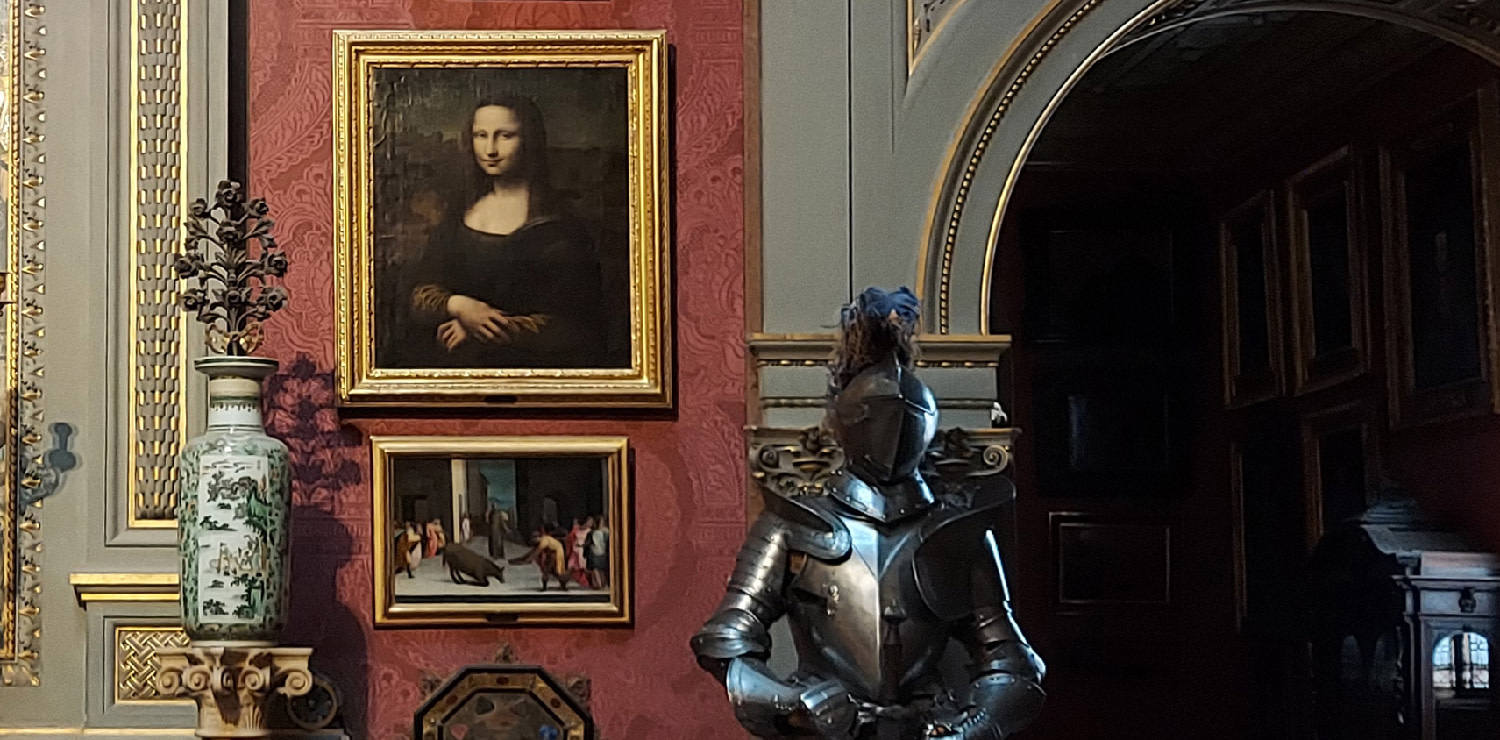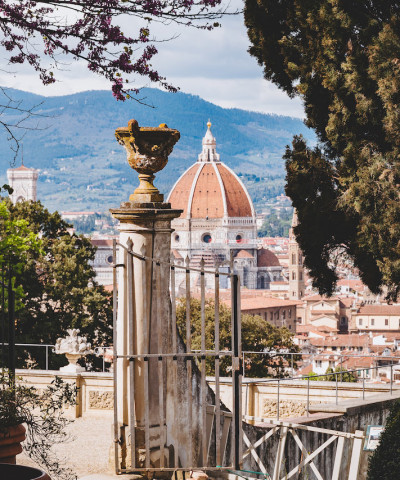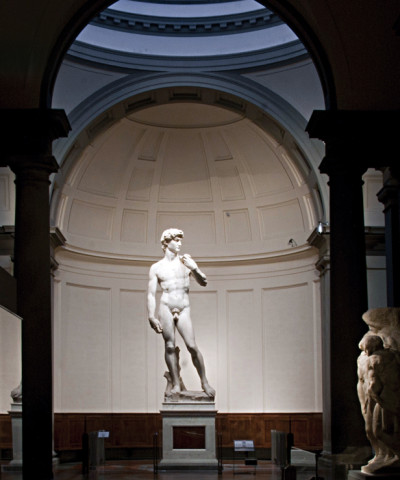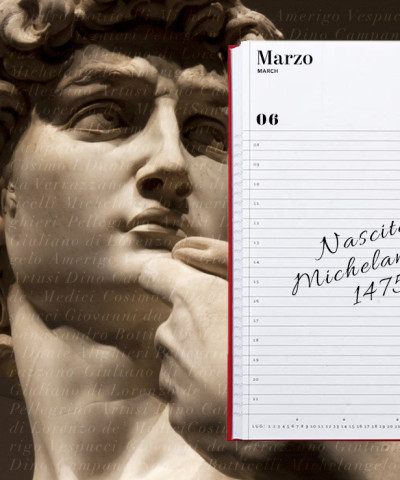The Mona Lisa and Florence
History of a masterpiece and the city to which it is linked
She smiles. Almost hieratic and certainly mysterious. Hers is one of the most seen faces in the world, but her name remains a subtle enigma, which many continue to try to unravel and many to consider unsolvable.
The subject
Tradition holds that the work depicts Lisa Gherardini, Mona Lisa where Lisa is a diminutive of Madonna derived from the Latin word mea domina, synonymous with lady, wife of Francesco del Giocondo's wife, hence the Mona Lisa. During his stay in Florence, Leonardo lived in the houses next to Palazzo Gondi, which belonged to the Gherardini family.
Vasari himself wrote that "Lionardo undertook to paint for Francesco del Giocondo the portrait of Mona Lisa, his wife, and four years later left it imperfect, which work is now with King Francis of France in Fontainbleu".
Some doubts have arisen from Vasari's description of the magnificently painted eyebrows (which the Mona Lisa does not have) and the dimples on the cheeks (which are also absent). However, this can be explained by the particular history of the painting, which followed Leonardo until his death in France and was retouched by the artist for years and years. Analyses of the painting have shown that there are three versions of the Mona Lisa, hidden beneath the current one.
The landscape
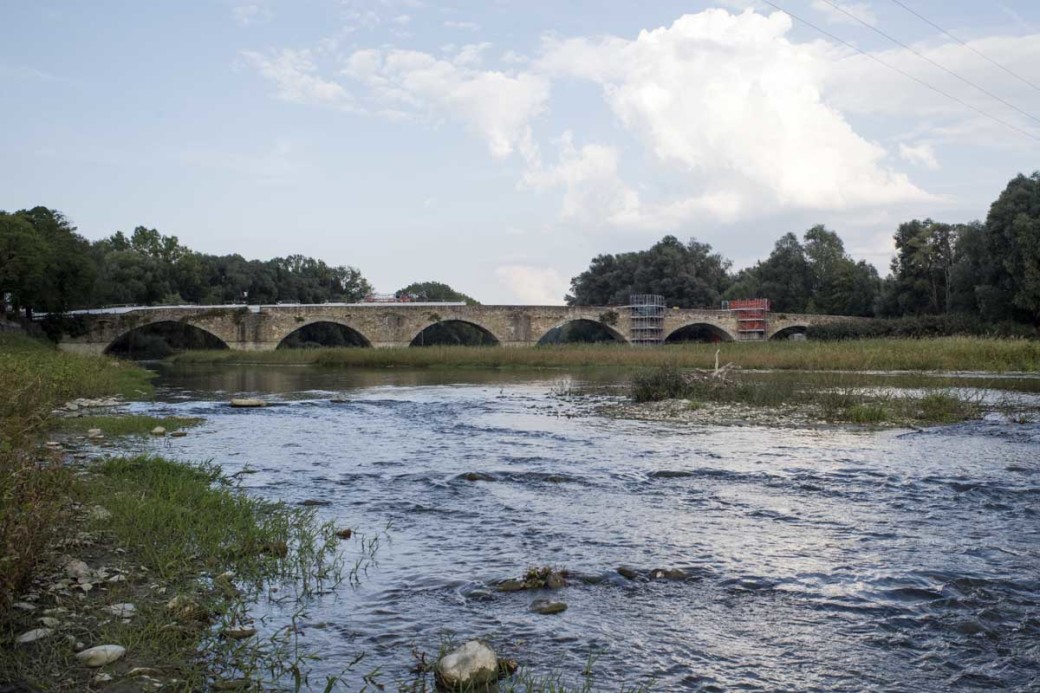 Ponte a Buriano - Leonardo da Vinci - Firenze
Ponte a Buriano - Leonardo da Vinci - FirenzeBut if her name remains shrouded in mists as light as those that make the landscape melancholy, making it all the more beautiful and unreachable (unless, as many scholars claim, the atmosphere is actually the result of centuries of the painting's life faced without adequate protection and safeguards), that of the man who portrayed her is one of the most famous of the luminous Italian and European Renaissance: Leonardo da Vinci, the artist and total genius who, according to tradition, died in the arms of the King of France, Francis I in Amboise in 1519. And Leonardo, born on 15 April 1542 and registered as illegitimate by his paternal grandfather Antonio in a hamlet near Empoli, whose name he bears, always carried with him - almost as a special memory of his homeland - the portrait of Mona Lisa. The nature in which the woman dressed in black and with the most attractive smile on the planet lies is in fact that in the surroundings of Florence, near the ancient Romanesque Ponte A Buriano that can still be admired today along the Arno in the province of Arezzo.
The Theft
It was Leonardo himself who brought the Mona Lisa to France in 1516, where it was later bought, along with other works, by Francis I.
In the night between Sunday 20 and Monday 21 August 1911, the Mona Lisa was stolen. The French poet Guillame Apollinaire was suspected of the theft. He was arrested after declaring that he wanted to destroy the masterpieces of all museums to make way for new art and taken to prison on 7 September 1911.
In reality, the theft was carried out by a former employee of the Louvre, Vincenzo Peruggia, from a small village near Luino, who was convinced that the painting belonged to Italy. He had stolen it, locked himself in a storeroom at night and, after spending the night there, removed the painting in the early morning and left the museum with the portrait under his coat. He put the work in a suitcase and hid it under the bed in a Parisian guesthouse, kept it for twenty-eight months and then took it back to his home country with the intention of 'giving it to Italy'.
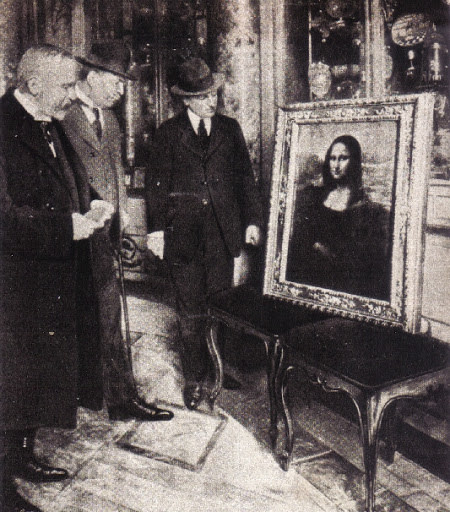 Gioconda - Gallerie degli Uffizi, 1913
Gioconda - Gallerie degli Uffizi, 1913 In 1913, he went to Florence to resell the work. He contacted the Florentine antique dealer Alfredo Geri with a letter signed Leonardo in which he wrote: 'The painting is in my hands, it belongs to Italy because Leonardo is Italian' and offered to return it for a ransom of 500,000 lire. Intrigued, on 11 December 1913, the antiquarian arranged an appointment in room 20 on the third floor of the Hotel Tripoli in Via de' Cerretani, accompanied by the then director of the Uffizi, Giovanni Poggi. The two realised that the work was authentic. While waiting, Peruggia went wandering around the city, but was tracked down, arrested and then sentenced to a light sentence because he was "mentally handicapped". His defence was based entirely on patriotism and also aroused sympathy: he himself declared that he had spent two 'romantic' years with the Mona Lisa hanging on his kitchen table
Taking advantage of relations between Italy and France, the recovered painting was exhibited throughout Italy: first at the Uffizi Gallery, then at the French embassy in Palazzo Farnese in Rome and at the Galleria Borghese, and finally at the Pinacoteca di Brera before its definitive return to the Louvre.
The Florentine little sister
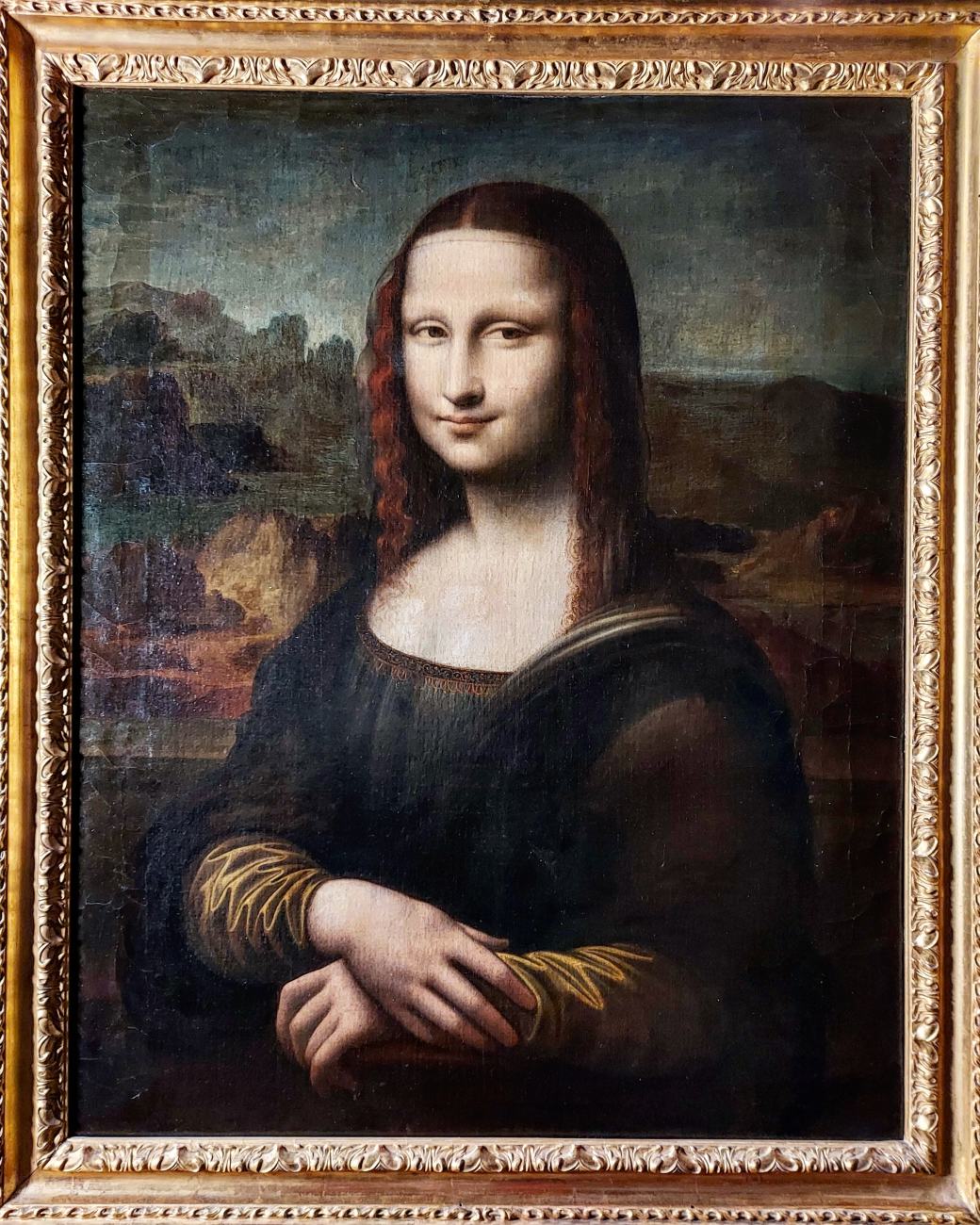 Gioconda - Museo Stibbert
Gioconda - Museo Stibbert One of more than sixty copies of Leonardo da Vinci's Mona Lisa scattered around the world can be found in Florence in the Malachite Room of the Stibbert Museum. This copy is linked to an extraordinary recent discovery: on the occasion of the celebrations for the 500th anniversary of Leonardo's death, deputy director Simona Di Marco studied this painting, considered a nineteenth-century copy of no value, relegated to storage and ignored for a century. According to initial investigations, it is an ancient copy, not a contemporary one, painted between the end of the 16th and the beginning of the 17th century. In fact, pigments that could not have been used after the 17th century were used, in particular enamel blue. Today, the painting is in a precarious condition: the original canvas was first trimmed and then stretched over a larger canvas where 19th-century repainting is evident. It is hoped that restoration work will soon begin, allowing the fragile parts to be consolidated and the work's lustre to be restored.
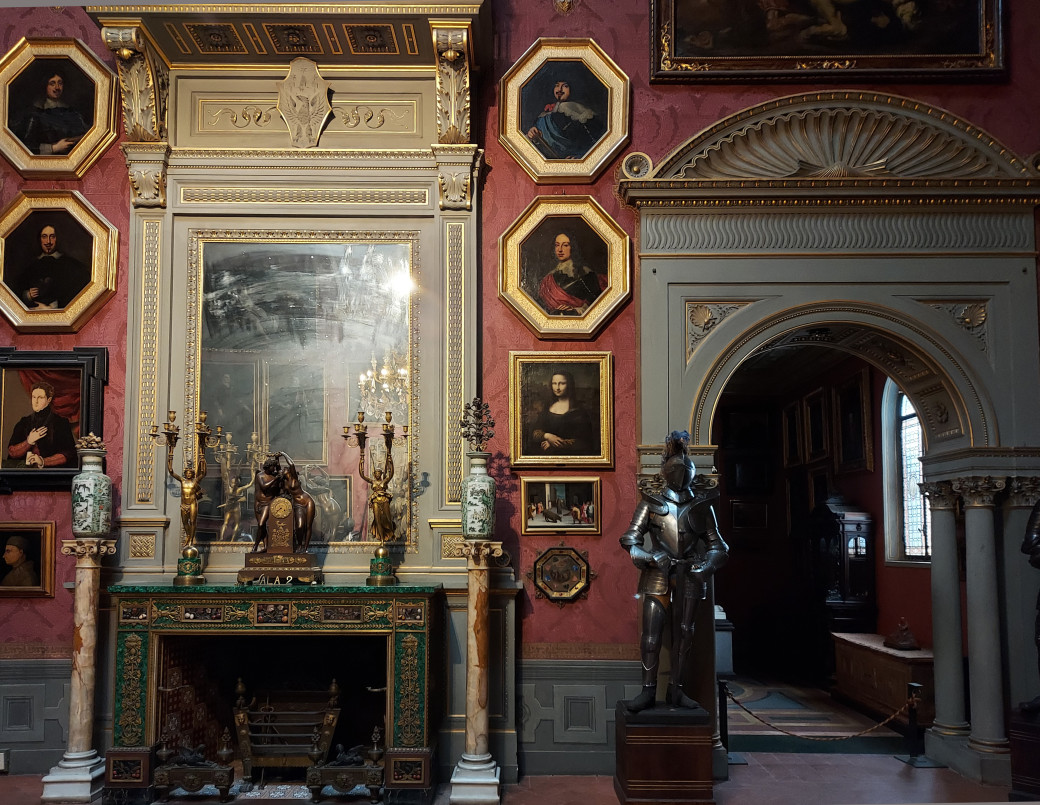 Gioconda - Museo Stibbert
Gioconda - Museo StibbertVery few people know it, but it is the only Mona Lisa visible in Florence. Frederick Stibbert bought it at the auction of the Mozzi Del Garbo collection in 1879 and placed it right here where we see it today.






